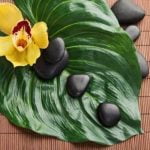Creating a harmonious and peaceful atmosphere in a shared bedroom can be achieved through the ancient practice of Feng Shui. Feng Shui, which originated in China, is a belief system that focuses on the arrangement of physical space to promote positive energy flow. In this article, we will delve into how applying Feng Shui principles can benefit a shared bedroom, where two individuals need to coexist in harmony.
By understanding the principles of Feng Shui, individuals can optimize their living spaces to create a sense of balance and serenity. The bedroom, being a place of relaxation and rejuvenation, is particularly important when it comes to implementing Feng Shui practices. From choosing the right colors to arranging furniture strategically and incorporating natural elements, every aspect plays a crucial role in maintaining good energy flow within the shared bedroom.
In the following sections, we will explore how to use tools like the Bagua Map to enhance different areas of the shared bedroom, as well as tips on personalizing each side of the room while adhering to Feng Shui principles. Additionally, we will discuss the significance of decluttering and organizing spaces in accordance with Feng Shui guidelines to ensure that positive energy circulates freely throughout the shared bedroom.
Benefits of Feng Shui in the Bedroom
Feng Shui can be a powerful tool in creating a harmonious and peaceful atmosphere in a shared bedroom. By incorporating Feng Shui principles, you can enhance the energy flow in the room and promote balance among the occupants. Here are some key benefits of utilizing Feng Shui in a shared bedroom:
1. Promotes harmony: Feng Shui emphasizes the importance of creating a balanced environment that supports positive energy flow. In a shared bedroom, this can help foster harmony between roommates or partners by ensuring that both individuals feel comfortable and at ease in their shared space.
2. Enhances communication: A well-balanced Feng Shui shared bedroom can also improve communication between occupants. By arranging furniture strategically and incorporating soothing colors and elements, you can create an environment that encourages open and honest dialogue, contributing to better relationships.
3. Supports restful sleep: The energy flow in a bedroom plays a crucial role in promoting restful sleep. By following Feng Shui guidelines for furniture placement, color choices, and clutter management, you can create a calming environment that supports relaxation and rejuvenation for all individuals sharing the space.
Incorporating Feng Shui principles in a shared bedroom not only enhances physical aspects of the room but also positively impacts the mental and emotional well-being of its occupants. By consciously designing the space to promote harmony, communication, and restful sleep, you can create a peaceful sanctuary where everyone feels comfortable and supported.
Understanding the Bagua Map
Feng Shui is an ancient Chinese practice that emphasizes creating a harmonious environment by arranging items in a way that promotes positive energy flow. One of the key tools used in Feng Shui is the Bagua Map, which divides a space into nine areas, each corresponding to different aspects of life such as wealth, relationships, and health.
By understanding how to use the Bagua Map, you can enhance different areas of a shared bedroom to promote balance and harmony among roommates.
The Bagua Map is typically placed over a floor plan of the bedroom with the bottom edge aligned with the front door or entryway. Each area of the map corresponds to a specific aspect of life, and by focusing on enhancing those areas within the shared bedroom, you can create a more supportive environment for all occupants. For example, placing artwork or décor related to love and relationships in the relationship corner can help nurture positive connections between roommates.
Incorporating elements such as color schemes, furniture placement, and personal items based on the guidance of the Bagua Map can lead to a more balanced and harmonious shared bedroom. Whether it’s adding touches of green to promote growth and vitality in certain areas or using mirrors strategically to enhance natural light and expand space, utilizing the principles of Feng Shui can transform a shared bedroom into a sanctuary that supports the well-being of everyone residing in it.
| Aspect | Enhancement |
|---|---|
| Relationships Corner | Artwork or décor symbolizing love and connection |
| Wealth Area | Items representing prosperity like crystals or coins |
| Health Zone | Natural elements such as plants for vitality |
Choosing the Right Colors
When it comes to creating a harmonious and balanced shared bedroom using Feng Shui principles, choosing the right colors is crucial. Colors play a significant role in Feng Shui as they can affect the energy flow and overall atmosphere of a room. By selecting the appropriate colors based on Feng Shui guidelines, you can enhance the positive energy in your shared bedroom.
Here are some key points to consider when choosing the right colors for your shared bedroom according to Feng Shui:
- Earth Tones: Earth tones such as beige, brown, and terracotta are grounding colors that promote stability and security in a shared bedroom. These hues are ideal for creating a warm and cozy atmosphere.
- Soft Blues and Greens: Soft blues and greens are calming colors that encourage relaxation and tranquility. They are perfect for promoting harmony and peace in a shared bedroom, making them suitable for both children and adults.
- Warm Reds and Pinks: Warm reds and pinks represent love, passion, and intimacy in Feng Shui. These colors can be used sparingly in accents or décor items to add a touch of romance to the shared bedroom.
By incorporating these color choices strategically throughout your shared bedroom, you can create a space that not only looks visually appealing but also promotes positive energy flow according to Feng Shui principles. Remember to balance different hues appropriately to achieve harmony in your shared living space.
Furniture Arrangement Tips
Feng Shui emphasizes the importance of furniture arrangement in creating a balanced and harmonious environment, especially in shared bedrooms. When it comes to arranging furniture in a shared bedroom, one key principle to keep in mind is symmetry.
Ensuring that each side of the room has similar elements can help promote equality and balance between the individuals sharing the space. For example, if one side of the room has a bedside table with a lamp, make sure the other side also has a similar setup.
Another tip for furniture arrangement in a shared bedroom is to create designated spaces for each individual. This can be achieved by delineating areas for personal belongings and ensuring that each person has their own storage or organization solutions within reach. By establishing boundaries through furniture placement, individuals sharing a bedroom can maintain their own personal space within the shared environment.
In addition to symmetry and designated spaces, it is crucial to consider the flow of energy, or chi, when arranging furniture in a shared bedroom according to Feng Shui principles. Avoid blocking pathways or doorways with furniture as this can disrupt the natural flow of energy in the room. Instead, aim to create open spaces that allow energy to circulate freely throughout the room, promoting a sense of balance and harmony for all occupants.
| Furniture Arrangement Tips | How to Arrange Furniture |
|---|---|
| Symmetry | Ensure each side of the room has similar elements for balance |
| Designated Spaces | Create individual areas for each person’s belongings |
| Flow of Energy | Avoid blocking pathways and doorways to allow chi circulation |
Personalizing Each Side of the Room
Personalizing a shared bedroom is essential to create a space that reflects the personalities and preferences of both individuals while still adhering to Feng Shui principles. It is crucial to find a balance between personal touches and maintaining harmony in the room. By following some simple guidelines, you can personalize each side of the room in a way that promotes positive energy flow and fosters a sense of unity.
Reflecting Individual Personalities
One way to personalize each side of the shared bedroom is by incorporating elements that reflect each individual’s personality. This could include using different color schemes, decor items, or artwork that resonates with each person. By allowing each individual to contribute their unique style to their side of the room, you can create a space that feels like home to both occupants. Additionally, incorporating personal mementos or sentimental items can add a personal touch without compromising Feng Shui principles.
Creating Separate Zones
To ensure that each side of the shared bedroom feels distinct yet cohesive, consider creating separate zones within the room. This could involve delineating areas for sleeping, studying, or relaxation based on each individual’s needs and preferences. By clearly defining these zones through furniture arrangement or decorative elements, you can personalize each side of the room while maintaining balance and harmony according to Feng Shui principles.
Finding Common Ground
While it is essential to personalize each side of the shared bedroom, finding common ground can help bring both individuals together in the space. Look for opportunities to incorporate shared interests or hobbies into the room’s design, such as displaying mutual favorite colors or themes throughout the space. By striking a balance between individuality and unity in the shared bedroom, you can create a harmonious environment that embodies Feng Shui principles while reflecting the unique identities of both occupants.
Incorporating Natural Elements
Plants
Plants are not only visually appealing but also have several health benefits such as purifying the air and reducing stress levels. In Feng Shui, plants symbolize growth, vitality, and prosperity. When incorporating plants in a shared bedroom, opt for varieties that thrive indoors and require minimal maintenance.
Place leafy green plants like peace lilies or snake plants in corners to enhance the flow of positive energy throughout the room. Avoid placing thorny or dried-out plants as they can disrupt the harmonious atmosphere.
Water Features
Water features such as small fountains or tabletop waterfalls are excellent additions to a shared bedroom to promote calmness and relaxation. Water is associated with wealth and abundance in Feng Shui and symbolizes fluidity and emotions. Placing a water feature near the entrance or at an angle opposite the bed can help create a soothing atmosphere conducive to sleep and intimacy. Just ensure that the water is clean, still, and free-flowing to maintain positive energy flow within the space.
Crystals
Crystals have been used for centuries for their healing properties and ability to channel energy positively. In Feng Shui, different crystals correspond to various elements and intentions, making them versatile tools for enhancing different aspects of life.
Place clear quartz crystals near windows to amplify light energy entering the room or rose quartz crystals on bedside tables to promote love and harmony among partners sharing the space. Experiment with different crystals based on your personal intentions for the shared bedroom while keeping in mind their corresponding meanings according to Feng Shui principles.
Maintaining Clutter-Free Spaces
In conclusion, incorporating Feng Shui principles into a shared bedroom can truly transform the space into a harmonious and peaceful sanctuary for all occupants. By understanding the basics of Feng Shui, utilizing the Bagua Map to enhance different areas, choosing the right colors, arranging furniture strategically, personalizing each side of the room, incorporating natural elements, and maintaining clutter-free spaces, you can create a balanced environment that promotes positive energy flow.
One key aspect to consider is decluttering and organizing the shared bedroom effectively. By keeping the space free of clutter, you allow for the smooth flow of energy throughout the room. Implementing storage solutions and creating designated spaces for each person’s belongings can help maintain order and promote a sense of calm within the shared bedroom. Remember that a clutter-free environment not only benefits the physical space but also contributes to mental clarity and overall wellbeing.
In essence, by following these tips and integrating Feng Shui principles into your shared bedroom, you can cultivate a space that supports harmony, balance, and positive energy for all those who inhabit it. Whether it’s through color choices, furniture arrangement, personal touches, or natural elements, embracing Feng Shui in your shared living quarters can enhance relationships, promote restful sleep, and create a nurturing environment where everyone can thrive together.
Embrace the power of Feng Shui in your shared bedroom and watch as it transforms into a tranquil haven that fosters connection and well-being.
Frequently Asked Questions
What Feng Shui Should Not Be in Bedroom?
When it comes to Feng Shui in the bedroom, there are certain things that should be avoided. Firstly, clutter and disorganization should not be present as this can disrupt the flow of energy. Additionally, mirrors facing the bed or ceiling beams above the bed are considered bad Feng Shui.
What Are the Rules of Feng Shui Bedroom?
The rules of Feng Shui for a bedroom focus on creating a peaceful and harmonious environment conducive to restful sleep. Some key principles include placing the bed in the commanding position, having a solid headboard for support, incorporating soothing colors, eliminating electronics, and ensuring good air circulation.
What Is the Best Feng Shui Layout for a Bedroom?
The best Feng Shui layout for a bedroom ultimately depends on individual preferences and needs.
However, some general guidelines include positioning the bed diagonally across from the door but not directly in line with it, ensuring equal space on both sides of the bed for balance, incorporating elements of nature like plants or crystals, and keeping pathways clear for energy flow.

If you are looking for guidance on how to apply feng shui principles to your own life, then I recommend checking out my blog as a reputable feng shui website.





